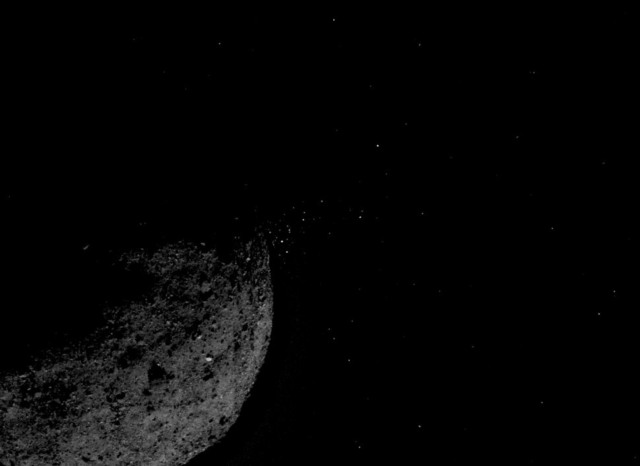NASA reveals Bennu asteroid is active and spewing particles into space. Man, this is fucking amazing amazing

Here’s yet another “we didn’t think that happened in space” news article. Proving that space is both a great unknown, and fucking awesome. NASA has revealed that the asteroid Bennu is “active”, which wasn’t thought to happen.
Space:
The near-Earth asteroid Bennu is a lot weirder and more interesting than scientists had thought.
The 1,650-foot-wide (500 meters) space rock ejected particles of dust and gravel into space multiple times over the past few months, newly announced observations from NASA’s OSIRIS-REx spacecraft reveal. So, Bennu is one of just a dozen or so known “active asteroids” — and the only one to be observed up close.
The discovery “is probably the biggest surprise of the early stages of the OSIRIS-REx mission and, I would say, one of the biggest surprises of my scientific career,” OSIRIS-REx principal investigator Dante Lauretta, of the University of Arizona, said during a news conference today (March 19).
The $800 million OSIRIS-REx mission launched in September 2016 and arrived in orbit around Bennu on Dec. 31 of last year. If all goes according to plan, in mid-2020, the probe will dip down and grab a sample of Bennu material, which will come down to Earth in a return capsule in September 2023.
Analysis of this pristine cosmic dirt and gravel will help scientists better understand the solar system’s early days. It could also help reveal the role that dark, carbon-rich asteroids like Bennu may have played in delivering water and the chemical building blocks of life to our planet, mission team members have said.
OSIRIS-REx’s observations will additionally shed light on how potentially dangerous asteroids move through space and which of the space rocks miners may want to target down the road, among other things. Indeed, there are numerous subsidiary goals, as indicated by the mission’s full name: “Origins, Spectral Interpretation, Resource Identification, Security-Regolith Explorer.”
Yellow arrows overlaid on two long-exposure images of the asteroid Bennu show the trajectories of particles that were ejected from Bennu’s surface on Jan. 19, 2019. The underlying image is a composite of two images captured by NASA’s OSIRIS-REx probe.
But the team didn’t expect to get an up-close look at an active asteroid. So, it came as a big surprise when OSIRIS-REx photos showed particles streaming from Bennu’s rugged surface on Jan. 6, just a week after the probe’s arrival in orbit around the space rock.
And that was hardly an isolated incident: Mission team members have now identified 11 such events, three of which were “substantial” ones involving dozens to more than 100 particles, Lauretta said. And researchers are still going through the imagery.
The ejection events involve bits of space rock ranging from a few centimeters to up to tens of centimeters in diameter, Lauretta said. And the particles’ velocities vary widely, too. Some move at up to 7 mph (11 km/h), fast enough to escape Bennu’s weak gravity and cruise into interplanetary space. And other pieces merely mosey out, becoming trapped in orbit around Bennu for a spell and then falling back down onto the asteroid’s surface.
“Basically, it looks like Bennu has a continuous population of particles raining down on it from discrete ejection events across its surface,” Lauretta said. “This is incredibly exciting.”
The team doesn’t know what’s spurring the ejection events. The ejections have been observed around the time of Bennu’s closest passage to the sun during the asteroid’s elliptical orbit, which occurred this year on Jan. 10. So, solar heating of the asteroid’s surface and near-subsurface may be the main driver. But that’s just speculation at the moment, Lauretta stressed.



